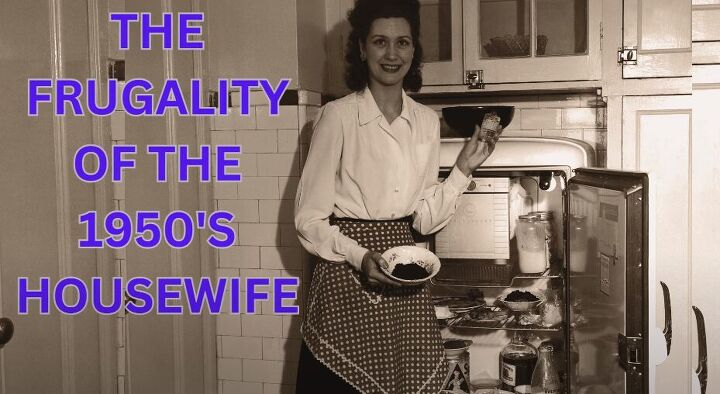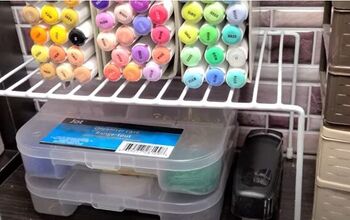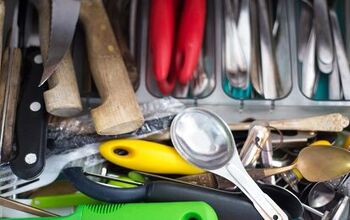How 1950s Frugality Can Save You Money Today

How did these amazing women navigate a post-war world with such resilience and resourcefulness? The 1950s is often romanticized as a period of domestic bliss, symbolized by the iconic image of the housewife managing the home.
These women were economic architects, crafting a stable family foundation in an era of post-war recovery and economic transition.
Let’s explore 1950s frugality, their homemaking strategies, and budget-conscious choices that defined the era. From meticulously planned budget meals to a DIY mindset, join us on a nostalgic journey into 1950s frugal living.
After World War 2, the post-war era brought a complex mix of challenges.
Despite the relief of victory, the immediate aftermath was the colossal task of rebuilding war-torn nations with an economy strained by the immense costs of war, and a transitioning job market for returning veterans who lacked the skills to work in a rapidly evolving industrial landscape.
Rationing and shortages persisted, impacting daily life. The housewife of the 1940s and 1950s had to live in a world of frugality, live on less, and be resourceful.
There are some things post-war housewives did to get by that still resonate today and things we can learn from.
The budget
The portioning out of incoming money was a priority. There were carefully planned monthly allocations for groceries, utilities, and discretionary spending, just as there are today.
The envelope system
They also had envelopes marked for specific expenses. Money-saving envelopes have had a resurgence in the last few years as a tangible way to utilize money responsibly.
It’s popular with the younger generation thanks to options of colorful binders, pretty printed envelopes, and exciting savings trackers, like the ones shown above.
In the 1950s, housewives used basic or reused envelopes they saved from letters. The envelope system was the same then as it is now.
Once an envelope is empty and the money is spent, that is it until the next incoming money.
Savings
Saving money was also encouraged and the government printed leaflets to encourage people to look at planning with their money.
Savings for the home, holidays, careers, cars, getting a national savings certificate, and using the post office savings bank were encouraged.
Luxuries
Having a car and paid holidays was really for the middle and upper class. Most people rode their bikes, walked, or took a bus to the beach.
Thrifting
Repurposing and the DIY ethos were still very important because they saved money and fostered a sense of self-sufficiency.
Women learned skills during the war that wouldn’t normally be seen as gender-appropriate but it wasn’t an option, they had to learn to do everything from fixing bicycles and mending furniture to building chicken coops and sheds.
Mending
Sewing and making clothes were still important. The ability to create and mend was not just a skill but a financial strategy.
It was commonplace to turn worn-out old clothes into new garments. An old dress could turn into children’s pajamas, for example.
If you did buy new clothes for your children, you would usually buy a larger size so they could grow into it and continue to wear it. Clothing exchanges popped up during the war and continued afterward.
Using less
In the 1950s, housewives learned to use less of everything and waste nothing. Nations were rebuilding and consumption of goods and food was limited.
For example, leftover cooked vegetables were put into a pie to replace a meat-based meal, vegetable peelings were made into stock, and porridge was made with water and salt rather than milk. Hearty stews would have grains added to bulk it up.
Laundry
Laundry was all-consuming as machines and dryers were not commonplace in the home.
Today, we may use a full cap of washing liquid or powder, but back then, a bar of laundry soap would be wet and rubbed over stains. This saved on soap and less rinsing would be required.
Towels were hung up to dry after use and not washed daily. Baths and showers were a weekly occurrence, not daily.
Feeding the family
Shopping with rationing stamps was commonplace in the 1950s. Families received rationing stamps to control the consumption of essential goods, such as food, clothing, and fuel.
Shopping became strategic, carefully planning purchases with allocated quarters.
When we shop today, we have a big shopping cart to fill.
In the 1950s, housewives had a small basket to fill. They’d fill it with fresh produce, grains, and dairy. There were no superstores like there are today.
There were no appliances to preserve or freeze food, either, so daily shopping was a necessity.
Budget-friendly gatherings
Social gatherings in the 1950s were also frugal. People shared their limited resources and created meals, or shared a cup of coffee or tea with homemade scones, all in an atmosphere of warmth and hospitality.
The domestic goddess image
Though many women worked during the war, there was a resurgence in conservative ideals, such as the traditional homemaker role.
But the homemaker role became glorified and people perceived these women were perfect domestic goddesses even though they were still practicing frugal living.
1950s frugality
The nostalgia of 1950s life is remembered for its simplicity, a sense of community, and the ability to make the most of limited resources.
If we can cultivate careful spending habits like the men and women from times gone by, save diligently, and invest wisely, we can safeguard our financial well-being.
Do you relate to 1950s frugality? Let us know in the comments what you think of the housewives from the 1950s.






































Comments
Join the conversation